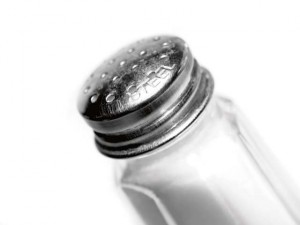by Carrie Shult
U.S. Army Public Health Command health educator

My friend and I measured our blood pressure at a grocery store station this week. What should have been a quick exam changed when his blood pressure measured 135/100. All of a sudden, commercials flashed through my head: “High Blood Pressure Kills!” and “The Silent Killer!”
We did some detective work on high blood pressure and determined that blood pressure is the force of blood pushing against the walls of the arteries as the heart pumps. If this pressure rises and stays high over time, it can damage the body in many ways, such as heart attack and stroke.
Next, we wanted to know what the risk factors are that increase the chance of developing high blood pressure. Here they are: family history, advanced age, lack of physical activity, poor diet (especially a diet high in salt), overweight and obesity, and drinking too much alcohol. Other possible contributing factors included stress, smoking and second-hand smoke, and sleep apnea.
Although there were risk factors he couldn’t change (for example, family history and age), there were many lifestyle factors my friend could control. He decided to start by cutting salt in his diet. A lower sodium level — 1,500 milligrams (mg) a day — is appropriate for people 51 years of age or older, and individuals of any age who are African-American or who have hypertension, diabetes or chronic kidney disease. Otherwise healthy people can aim for 2,300 mg a day or less.
The Institute of Medicine reports the majority of the sodium we eat (75 percent) is added to commercial foods during processing or restaurant foods during preparation. Only 25 percent occurs naturally or is added at the table or in cooking.
A report from the Centers for Disease Control and Prevention said 44 percent of the sodium we eat comes from only 10 types of foods: breads and rolls, cold cuts and cured meats, pizza, poultry, soups, sandwiches, cheese, pasta dishes, meat dishes, snacks.
Your biggest bang for the buck is to eat less processed and restaurant foods. Check the nutrition facts on food items and choose lower sodium versions. In addition, choose fresh fruits and vegetables.
Try these additional tips for reducing the sodium in your diet:
• uy fresh, plain, frozen or canned “with no salt added” vegetables.
• se fresh poultry, fish and lean meat rather than canned or processed types (deli-meats). If you use canned meats, rinse them to remove some of the sodium.
• se plain rice and noodles. Packaged foods such as flavored rice, ramen noodles, and macaroni and cheese are higher in sodium.
• hoose “convenience” foods that are lower in sodium. Cut back on frozen dinners, pizza, packaged mixes (instant soup, flavored rice, macaroni and cheese), canned soups or broths, and salad dressings.
• paringly use condiments such as salad dressings, soy sauce, steak and barbecue sauce.
• imit salted snacks such as chips, pretzels and nuts.
For more information on reducing salt intake, visit www.cdc.gov/VitalSigns/Sodium.


